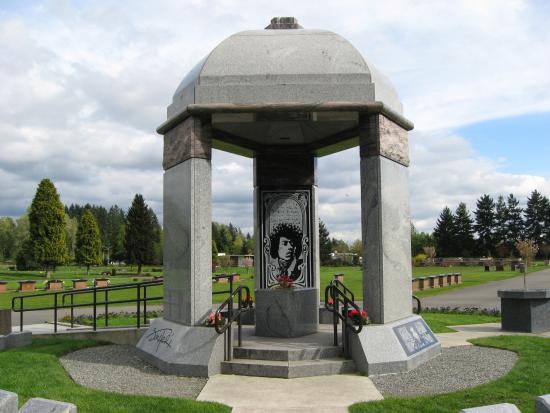Dr.Amber Trichome
Well-Known Member
 These numbers are compelling
These numbers are compelling
****9/19/19*****

 These numbers are compelling
These numbers are compelling

Love Jimmy. RIP . what a heart throb.
Early on September 18, 1970, Jimi Hendrix died in London. He had spent the latter part of the previous evening at a party and was picked up by girlfriend Monika Dannemann and driven to her flat at the Samarkand Hotel, 22 Lansdowne Crescent, Notting Hill. According to the estimated time of death, from autopsy data and statements by friends about the evening of September 17, he died within a few hours after midnight, though no precise estimate was made at the original inquest.
Dannemann claimed in her original testimony that after they returned to her lodgings the evening before, Hendrix, unknown to her, had taken nine of her prescribed Vesperax sleeping pills. The normal medical dose was half a tablet, but Hendrix was unfamiliar with this very strong German brand. According to surgeon John Bannister, the doctor who initially attended to him, Hendrix had asphyxiated in his own vomit, mainly red wine which had filled his airways, as the autopsy was to show. For years, Dannemann publicly claimed that she had only discovered that her lover was unconscious and unresponsive sometime after 9 a.m., that Hendrix was alive when placed in the back of the ambulance after half past eleven, and that she rode with him on the way to the hospital; the latter two are denied by the ambulance crew. However, Dannemann's comments about that morning were often contradictory, varying from interview to interview. Police and ambulance statements reveal that there was no one but Hendrix in the flat when they arrived at 11:27 a.m., and not only was he dead when they arrived on the scene, but was fully clothed and had been dead for some time.
Later, Dannemen claimed that former road managers Gerry Stickels and Eric Barrett had been present before the ambulance was called and had removed some of Hendrix's possessions, including some of his most recent messages. Lyrics written by Hendrix, which were found in the apartment, led Eric Burdon to make a premature announcement on the BBC-TV program 24 Hours that he believed Hendrix had committed suicide. Burdon often claimed he had been telephoned by Dannemann after she discovered that Jimi failed to wake up.
Following a libel case brought in 1996 by Hendrix's long-term English girlfriend Kathy Etchingham, Monika Dannemann committed suicide.
Allegations of murder
A former Animals "roadie," James "Tappy" Wright, published a book in May 2009 claiming Hendrix's manager, Mike Jeffery, admitted to him that he had Hendrix killed because the rock star wanted to end his management contract. John Bannister, the doctor who attended the scene of his death in 1970 stated in 2009 that it "sounded plausible".
It was claimed that Mike Jeffery was not "in London," he was in Spain when Jimi died in London on September 18, 1970.
"There was a freak storm across Majorca and all the phone lines were down. Somebody told Mike that Jimi had been trying to phone him. The first call that got through was to say Jimi was dead. Mike was terribly upset at the thought of Jimi not being able to get through to him." - Trixie Sullivan, secretary/assistant for Mike Jeffery
Gravesite
Hendrix's body was returned to Seattle and he was interred in Greenwood Memorial Park, Renton, Washington. As the popularity of Hendrix and his music grew over the decades following his death, concerns began to mount over fans damaging the adjoining graves at Greenwood, and the growing, extended Hendrix family further prompted his father to create an expanded memorial site separate from other burial sites in the park. The memorial was announced in late 1999, but Al Hendrix's deteriorating health led to delays and he died two months before its scheduled completion in 2002. Later that year, the remains of Jimi Hendrix, his father Al Hendrix, and grandmother Nora Rose Moore Hendrix were moved to the new site. The headstone contains a depiction of a Fender Stratocaster guitar, the instrument he was most famed for using —– although the guitar is shown right-side up, rather than the way Hendrix played it, upside down (left-handed).
The memorial is a granite dome supported by three pillars under which Jimi Hendrix and other family members are interred. Hendrix's autograph is inscribed at the base of each pillar, while two stepped entrances and one ramped entrance provide access to the dome's center where the original Stratocaster adorned headstone has been incorporated into a statue pedestal. A granite sundial complete with brass gnomon adjoins the dome, along with over 50 family plots that surround the central structure, half of which are currently adorned with raised granite headstones.
To date, the memorial remains incomplete: brass accents for the dome and a large brass statue of Hendrix were announced as being under construction in Italy, but since 2002, no information as to the status of the project has been revealed to the public. A memorial statue of Jimi playing a Stratocaster stands near the corner of Broadway and Pine Streets in Seattle.
In May 2006, the city of Seattle honored Hendrix with the re-naming of a park near Seattle's Colman School in the Central District.


The end of the last full palindrome week for quite a whileThese numbers are compelling
****9/19/19*****
i had a feeling something strange was going on. Trippy. I had a mad coworker once who was into numerology and keptThe end of the last full palindrome week for quite a while



















The College of Rock and Roll KnowledgeBruce Springsteen was born 70 years ago.

